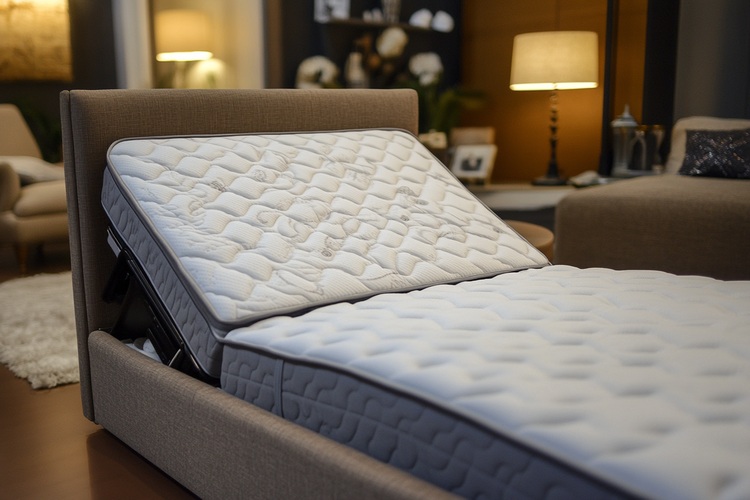The Essential Bed Buying Guide: Choose Your Perfect Match
A bed shapes both the look of your bedroom and the quality of your sleep. Since we spend roughly one-third of our lives in bed, choosing the right frame and features matters. This guide explains materials, support systems, styles, modern tech, maintenance tips, and price ranges to help you pick a bed that fits your needs and boosts comfort.

How beds are built and what materials matter
A well-made bed begins with its frame. Common materials include solid hardwood, metal, and engineered wood. Solid hardwood frames—think oak or maple—are pricier but stand up to long-term wear and heavy use. Metal frames deliver dependable strength at a lower cost and often suit minimalist or industrial interiors. Engineered wood (such as MDF or plywood) offers affordability and consistent manufacturing tolerances but may not match the longevity of solid timber.
Upholstered beds add a tactile, finished look, with fabric or leather coverings on headboards and frames. They soften a room’s aesthetic but need more attention to keep them looking fresh. Equally crucial is the support system beneath the mattress: slats, platform panels, or box springs affect mattress performance, ventilation, and lifespan. Choosing the right support helps prevent sagging and preserves your mattress investment.
Features to weigh before buying
Beyond size and style, several practical elements should guide your decision. Headboards range from simple flat panels to padded designs and integrated storage; they can be purely decorative or provide useful functionality like shelving. Bed height matters for both comfort and room proportion—most beds sit between about 16 and 25 inches from the floor to the top of the mattress, influencing ease of getting in and out as well as under-bed storage potential.
Think about assembly complexity, especially if you move frequently or have limited tools. Warranty coverage varies widely; longer warranties usually indicate greater manufacturer confidence. Also confirm the frame’s weight capacity if you or a partner require higher-than-average support. These factors—assembly, warranty, and load rating—affect long-term satisfaction as much as initial looks.
Modern innovations changing how beds work
Contemporary beds go beyond a simple platform and mattress. Adjustable bases let sleepers raise the head or feet for reading, watching TV, or easing certain health conditions. Smart beds combine sensors and electronics to track sleep, regulate temperature, or even adjust position automatically. Many modern frames add practical conveniences such as built-in LED lighting, USB charging ports, or integrated Bluetooth speakers—features designed to streamline bedside tech and enhance comfort.
When considering tech-enabled options, evaluate power needs, compatibility with other devices, and how software updates are handled. Some smart features require subscriptions or companion apps, so factor ongoing costs and data privacy into your decision.
Caring for your bed to extend its life
Routine maintenance preserves both function and appearance. For upholstered components, vacuuming and spot-cleaning prevent dust buildup and reduce allergens. For wooden and metal frames, occasional tightening of bolts and a visual check of slats and joints will help catch wear before it becomes a problem. Most mattress makers recommend regular rotation or flipping (if the mattress design allows) to promote even wear.
An annual inspection of frame alignment and hardware is a simple step that can prevent squeaks and structural issues. If you use a box spring or slatted base, ensure slat spacing matches your mattress manufacturer’s recommendations—incorrect support can void warranties and shorten mattress life.
Popular bed styles and typical price ranges
| Bed Style | Average Price Range | Key Features |
|---|---|---|
| Platform Bed | $200–$1,000 | Low-profile, no box spring required; modern aesthetic |
| Storage Bed | $400–$2,000 | Built-in drawers or lift-up bases for efficient use of space |
| Sleigh Bed | $500–$3,000 | Curved headboard and footboard; classic, substantial presence |
| Canopy Bed | $700–$4,000 | Tall posts for draping; dramatic focal point |
| Adjustable Bed | $1,000–$3,500 | Mechanized position control; comfort and health benefits |
Prices, rates, or cost estimates mentioned in this article are based on the latest available information but may change over time. Independent research is advised before making financial decisions.
Matching choice to your lifestyle and space
Deciding on the right bed is a balancing act between form and function. If you need storage in a small apartment, a storage or platform bed with drawers can free up closet space. If technology and personalized comfort are priorities, an adjustable or smart bed might be worth the investment. For a long-term, heirloom-quality piece, solid hardwood frames are usually the best option; for budget-friendly durability, metal or well-built engineered wood frames work well.
Consider the bedroom’s scale and the bed’s visual weight. Bulky frames can overwhelm small rooms, while low-profile platforms may look lost in large master bedrooms. Always measure doorways, stairwells, and elevators before purchasing to confirm the bed can be delivered and installed without issue.
Final considerations
A conscious approach to materials, support systems, features, and upkeep will lead to a purchase that improves sleep and fits your home. Prioritize what matters most—durability, storage, technology, or style—and use the practical factors (height, warranty, assembly, weight capacity) to narrow options. With the right information and realistic expectations, you can choose a bed that provides comfort, supports your mattress, and complements your lifestyle for years to come.






